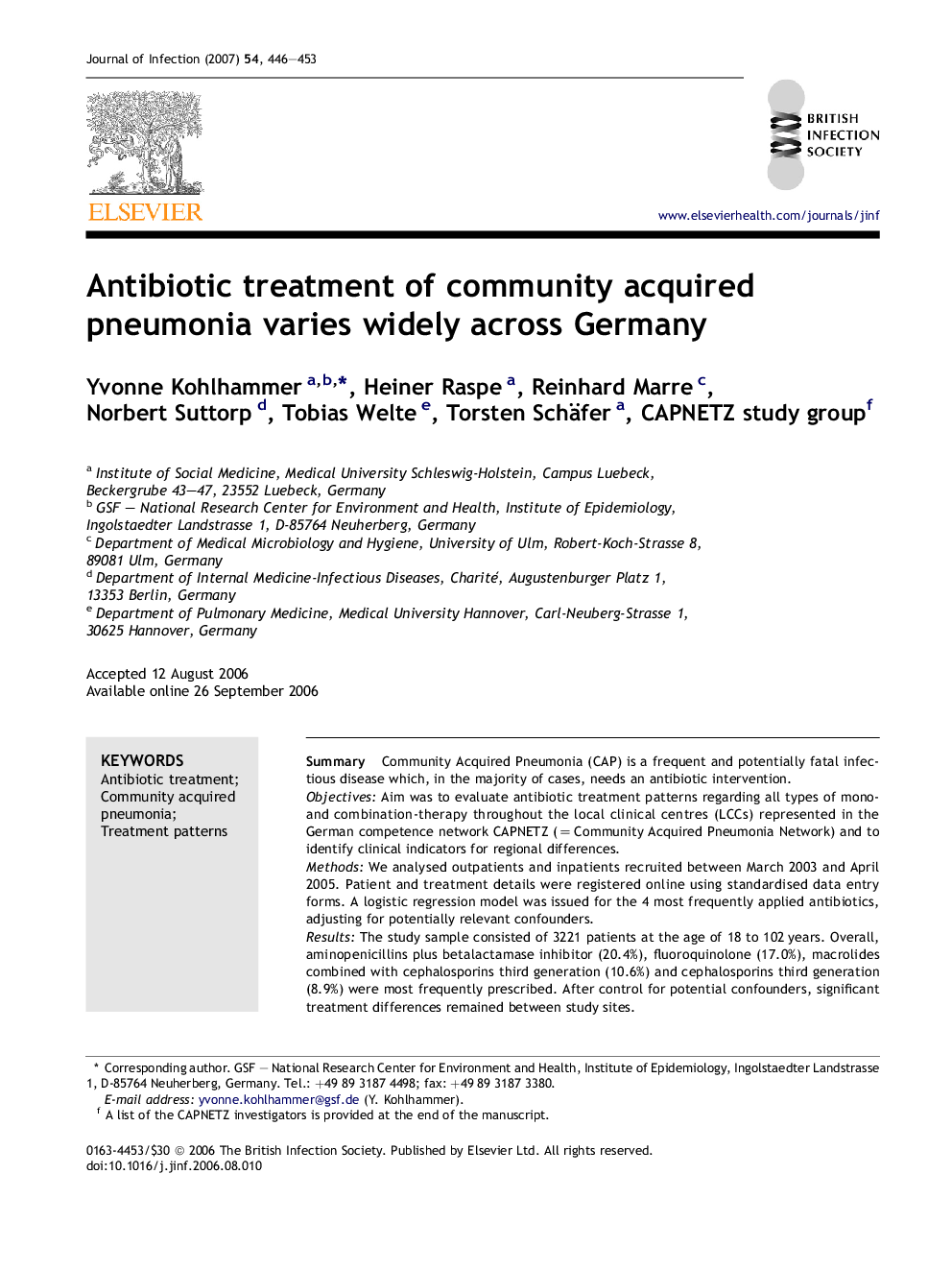| Article ID | Journal | Published Year | Pages | File Type |
|---|---|---|---|---|
| 3376501 | Journal of Infection | 2007 | 8 Pages |
SummaryCommunity Acquired Pneumonia (CAP) is a frequent and potentially fatal infectious disease which, in the majority of cases, needs an antibiotic intervention.ObjectivesAim was to evaluate antibiotic treatment patterns regarding all types of mono- and combination-therapy throughout the local clinical centres (LCCs) represented in the German competence network CAPNETZ (= Community Acquired Pneumonia Network) and to identify clinical indicators for regional differences.MethodsWe analysed outpatients and inpatients recruited between March 2003 and April 2005. Patient and treatment details were registered online using standardised data entry forms. A logistic regression model was issued for the 4 most frequently applied antibiotics, adjusting for potentially relevant confounders.ResultsThe study sample consisted of 3221 patients at the age of 18 to 102 years. Overall, aminopenicillins plus betalactamase inhibitor (20.4%), fluoroquinolone (17.0%), macrolides combined with cephalosporins third generation (10.6%) and cephalosporins third generation (8.9%) were most frequently prescribed. After control for potential confounders, significant treatment differences remained between study sites.Regional variability of antibiotic CAP-treatment could not be attributed to a number of clinical or sociodemographic factors.ConclusionsThe presented treatment variability ranges within given guidelines, but indicates the need for an ongoing implementation of evidence-based guidelines in order to avoid potential negative clinical or economic consequences.
